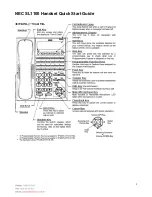
HUAWEI RP100-55T Room Presence
User Guide
10 Security
Issue 01 (2013-12-20)
Huawei Proprietary and Confidential
Copyright © Huawei Technologies Co., Ltd
63
The server verifies the user-generated data. Before transmitting it to clients, the server
encodes the data in the HyperText Markup Language (HTML) to prevent malicious code
and cross-site scripting attacks.
Web security software is used to scan the web server and applications to ensure that there
are no high-risk vulnerabilities.
10.1.4 Protocol Anti-Attack Measures
The communication port matrix is provided in the product documentation. Do not enable
the services and ports not mentioned in the communication port matrix.
The communication port matrix contains the following information:
−
Available ports Transport layer protocols used by the ports Network elements (NEs)
that use the ports to communicate with peer NEs
−
Application layer protocols used by ports and description of the services at the
application layer
−
Information about whether services at the application layer can be disabled
Authentication modes of the ports Port functions, such as control traffic and data
traffic
The Real-time Transport Protocol (RTP) and Transport Layer Security (TLS) are
supported to encrypt voice services.
Web-based diagnostics tools require the correct user name and password to connect to
the RP100-55T. They must be the same as the administrator user name and password for
the RP100-55T web interface, and are encrypted before transmission to the RP100-55T.
For network management, the RP100-55T supports the Simple Network Management
Protocol v3 (SNMP v3), which features higher adaptability and security. The network
management device requires the correct user name (
initialmd5
or
initialsha
by default)
to connect to the RP100-55T.
Robustness testing tools are used to scan protocols to ensure that there are no high-risk
vulnerabilities.
By default, the RP100-55T uses the File Transfer Protocol Secure (FTPS) to encrypt data
through the Secure Sockets Layer (SSL) and ensure data integrity.
10.2 Configuring Security Settings
You can set security parameters (such as an administrator password) to to enable H.235
encryption and control whether common users can log in remotely and access certain screens.
10.2.1 Setting the Administrator Password
You can set the administrator password to restrict access to certain screens.
To set the administrator password, do the following:
Step 1
Choose
Settings
>
Security
>
Password
, and then set the parameters listed in Table 10-1.
















































